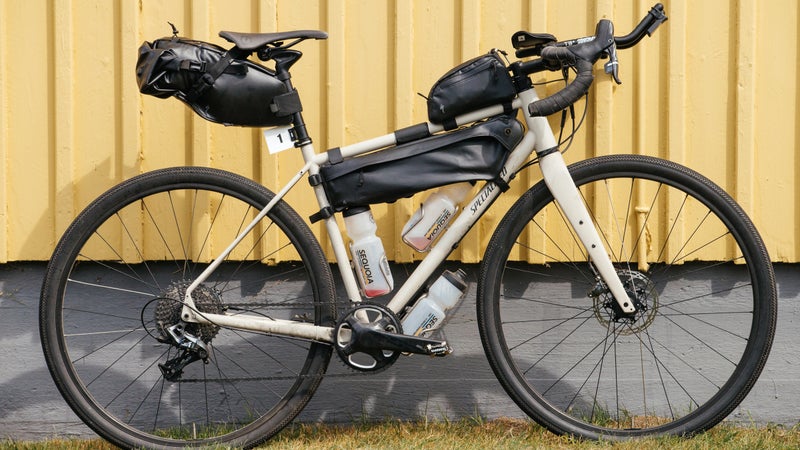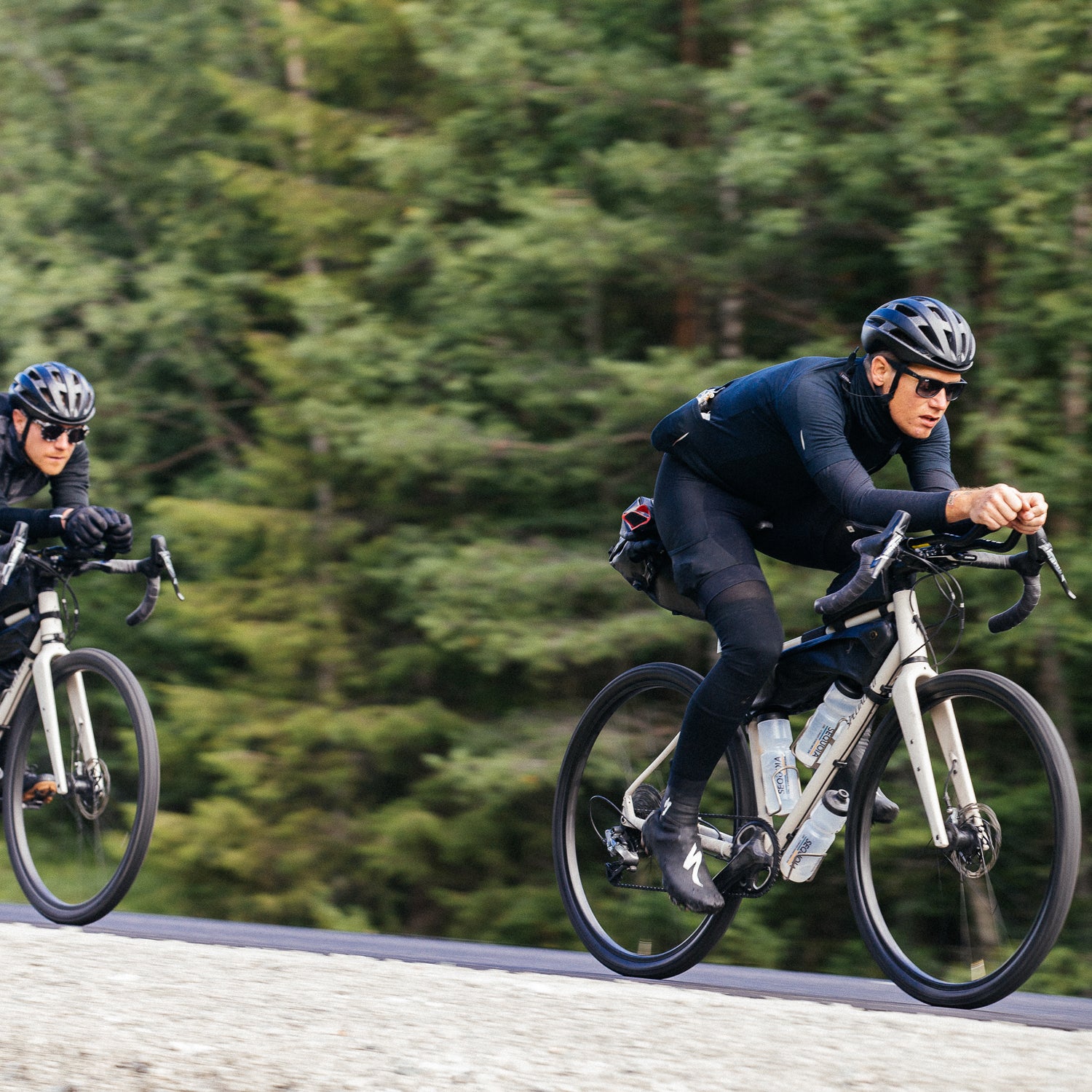Earlier this month in Pisgah, North Carolina, at an event the company called “���ϳԹ��� Camp,” Specialized relaunched the first bike it ever produced, the Sequoia. I didn’t attend, instead opting for a week following the bike’s chief designer, Erik Nohlin, as he test drove the new machine on a 1,350-mile ride across Sweden called the t.
In his ratty, black, skinny jeans and inked up body, Nohlin looks more like a punk rock antihero than a bike guy. Yet from what I can tell, it’s largely his counterculture influence that has prodded Specialized to create a full category. Ever the iconoclast, Nohlin hates the A-word, grimacing every time he hears it, including mentions of the Pisgah camp.
Nomenclature is a divisive issue in this genre. Bike touring is experiencing a resurgence, for instance, but you might not know it because it’s being marketed as “bikepacking” on the trails and “randonneuring” on the pavement. And there’s an even bigger debate about what to call the bikes for the task. Gravel? Mixed-surface? Alternative road? God forbid, not adventure.

The name game derives partly from a move by big companies like Specialized, Diamondback (part of the Accell group), GT and Cannondale (part of the Cycling Sports Group), and others to grab hold of this trending category and make sense of it for the consumer. Having pushed fast, aggressive, light bikes with skinny tires (à la Tour de France) for decades, these companies are scrambling to explain the new paradigm of stocky road bikes with wide tires, which look about as out of place as Nohlin would in a kitted-up peloton. So everyone is searching for—or trying to create—a “story,” starting with a new name.
Part of the debate is that there are no hard-set norms for these new bikes. Since you can ride a race bike with 28-millimeter rubber on a washboard dirt road pretty comfortably, and likewise you can pilot a 30-pound touring machine with 45-millimeter tires like the on pavement just fine, all road bikes exist on a continuum. “I don’t really see it as adventure or endurance or any label,” Nohlin told me the day before the Sweden ride. “It’s all road biking.”
Case in point: Jim Merz, the quirky patriarch responsible for the original Sequoia, who was legendary for 3,000-mile, self-supported tours on a myriad of surfaces, which he took aboard steel bikes with skinny tires. Metal road bikes with additional clearance have been available for years, too—. And the wrangling is evident even within Specialized today. Though he never came out and said it, Nohlin gave the impression that he felt the company’s previous adventure offering, the Diverge, hadn’t veered far enough from the pavement DNA. “I think that many riders will be happier in the long term on a bike like the Sequoia,” he said.
That brings us to the new bike, which is a butted chromoly steel frame with 700c wheels that come stock with 42-millimeter tires. Nohlin referred to it as a “steel Diverge with better tire clearance.” That’s pretty much true but not 100 percent accurate because, while the bikes bear striking geometry similarities, the Sequoia is slacker up front and a bit longer and lower overall. The , which Nohlin rode across Sweden, has a wide, raked-out carbon fork for compliance and stability, thru-axles front and rear, a stout (32-hole, 25mm wide) tubeless-ready wheel set, disc brakes, and flared drop bars for control and varied hand positions. And where the Diverge maxed out around 32mm tires, which was my biggest complaint with that bike, the Sequoia can fit up to around 50mm, brand and width depending. The Expert and Elite models go for $3,500 and $2,000 respectively, while the base model, with a Cr-Mo fork instead of carbon, costs $1,300. And Specialized already has a 650B wheelset on the way, for even more tire clearance. In broad strokes, the bike is an affordable, everyday equivalent of our 2016 Gear of the Year-winner, the Open Unbeaten Path.
In conjunction with the new bike, Specialized is also launching the Burra Burra bag line, a series of bike packs built for hauling gear over long distances. There are nine models, including two sizes of bar bags plus a harness system, a box-style bag for a front rack, three sizes of bags that fit in the main triangle (the strip variety, not the full frame), two sizes of rear packs that include a seat post-mounted stabilizer frame, a stuff sack that fits on an oversize water bottle-style cage, and a top tube-mount feed bag. All of these ideas are reminiscent of gear that’s already on the market from the likes of Revelate, Porcelain Rocket, Salsa, and others, but they are still solid-looking, well-designed, weatherproof packs.
The truth about the Sequoia and the Burra Burra bags is that they are not necessarily treading new ground, but they are refining what’s out there and bringing it to a wider audience. Sure you could buy bikes and packs like this before, but they came from small manufacturers, cost a factor or ten more, and sometimes entailed a six-month wait or longer. When a company like Specialized jumps on a niche like touring (or bikepacking, or randonée, or adventure, or whatever), it legitimizes the movement to the broader public. And, of course, Specialized generally makes genuinely good gear, with lots of R&D and care put into its products, so they pave the way for more investment and potentially interesting developments
In , Nohlin rode alongside two friends, Rita Jett Borelli of Specialized and Kristian Hallberg, an old mate from Göteborg. They rode Sequoias as well, and all three finished healthy, happy—if a bit delirious from fatigue and sleep deprivation—and without major mechanicals. Each of them suffered broken spokes on the new Cruzero wheels, though Nohlin said they were all riding pre-production models, and my expectation is the issue will be resolved by the time the bikes are available for purchase. Other than that, Borelli and Hallberg said they loved the bike, raving over its stability and comfort for such a long haul. I pedaled a few kilometers on the Sequioa, and it indeed felt smooth, planted, and very solid. The Burra Burra packs also seemed stable and held up to a full, miserable day of drubbing rain.
Also along for the ride were , whose bikes ranged from an aluminum Fondriest to an S-Works Venge, all with 25-millimeter tires and smaller. Every one of the four said they’d choose their own, lightweight bikes over the 24ish-pound Sequoia every time—comfort be damned. In fairness, over the 6.5 days of riding, there were at most a few hours of gravel, and the Sequoia’s 42-millimeter Sawtooth tires, which look awesome for mixed terrain, thus seemed like overkill. The friends’ attitude, however, underscores the challenges facing this new alternative road market: not only are roadies unaccustomed to mixing it up on more rugged terrain than pavement, even when they do, the bias toward light and fast, which the industry has for so long fed, generally wins out over comfort and riding ease. In that sense, Specialized is still at the cusp of the trend, and their entrée is important for the influence they wield. I tend to agree with Nohlin that the average rider would be happier on a bike like the Sequoia than a carbon racer, and with the Sequoia, Specialized may be able to help shift attitudes.
So do you need the Sequoia, or any mixed-terrain road bike like it? Technically, no. Most road bikes can handle variable terrain better than people give them credit for. But that’s like saying that you can drive a Volkswagen Golf on a surprising amount of 4×4 roads. It’s true, but if you plan to spend a lot of time doing it or go especially fast and hard, a pickup would be easier, more fun, and will last longer. Keeping with the analogy, where the Diverge is a Volvo XC70 and the AWOL is a light pickup truck, the Sequoia is the bike equivalent of a rally car. You could argue that Specialized is slicing the pie pretty thin with so many bikes that have so much crossover, but choosing comes down to how much time you spend riding mixed terrain. To me, the Sequoia would be optimal if 50 to 60 percent of your time was off pavement. And if comfort and budget are big concerns, the Sequoia would be ideal for even more asphalt time, especially if you could afford a second set of lighter wheels and tires for days that you never leave pavement.
The last word goes to Nohlin, who not only designed the Sequoia specifically for the Sverigetempot but has been doing brevets and mixed-terrain rando rides for well over a decade—long prior to his time at Specialized, and before the industry started appropriating the genre and coining snappy terms for it. “I would have killed for a bike like this 10 years ago. There’s so much mixed terrain around Southern Sweden,” he says. “I feel like I have a responsibility to demonstrate to the community that it’s not all about racing. You can both go fast and have fun, and I’m building bikes to do that.”
Just don’t call it an adventure bike.


